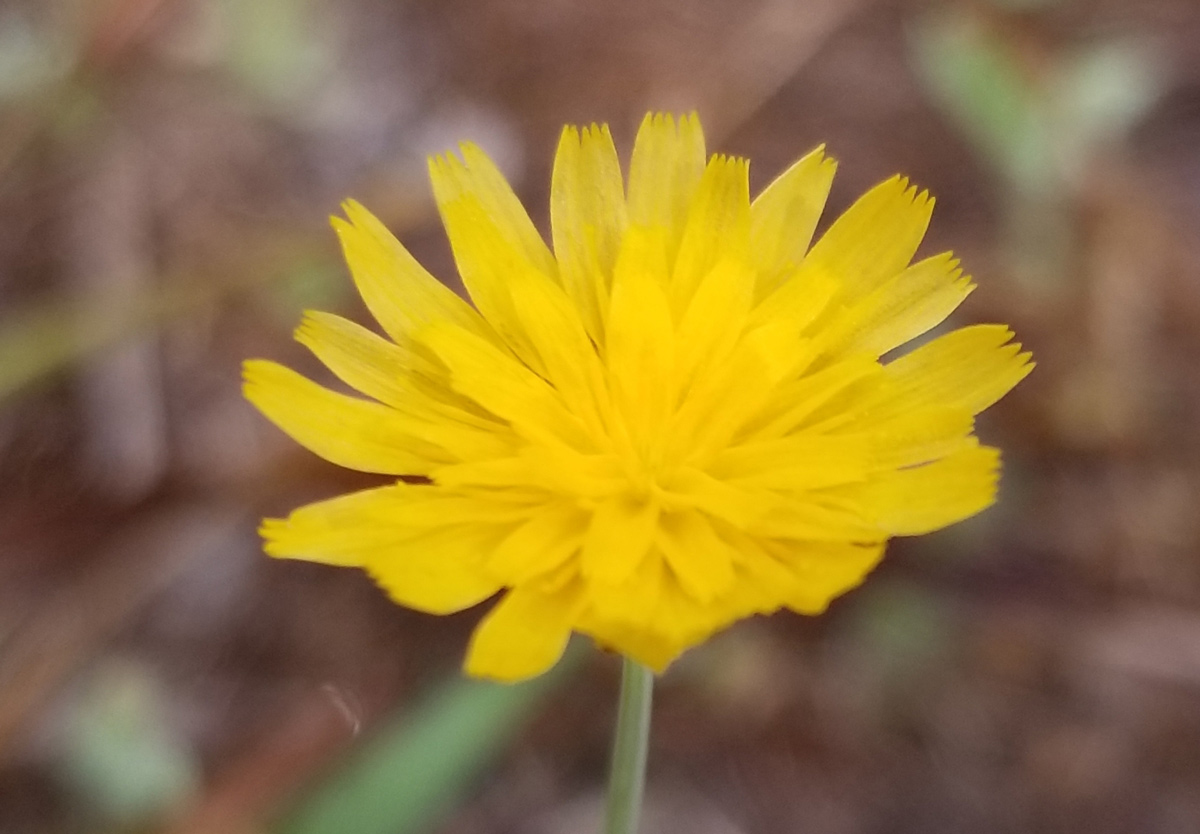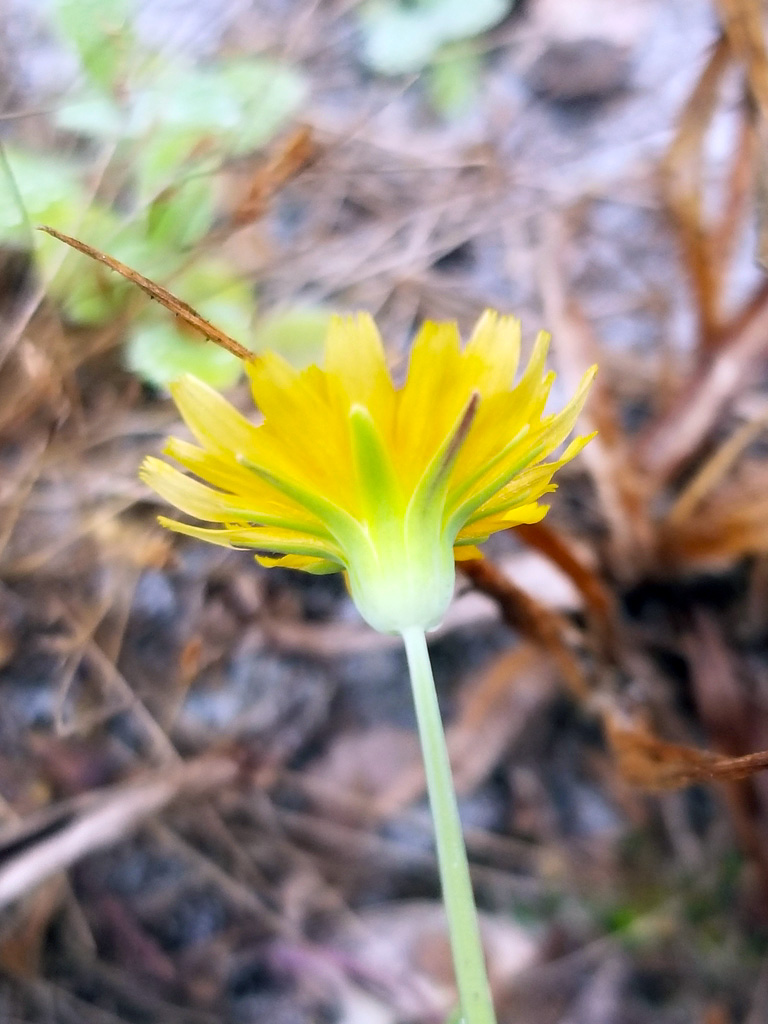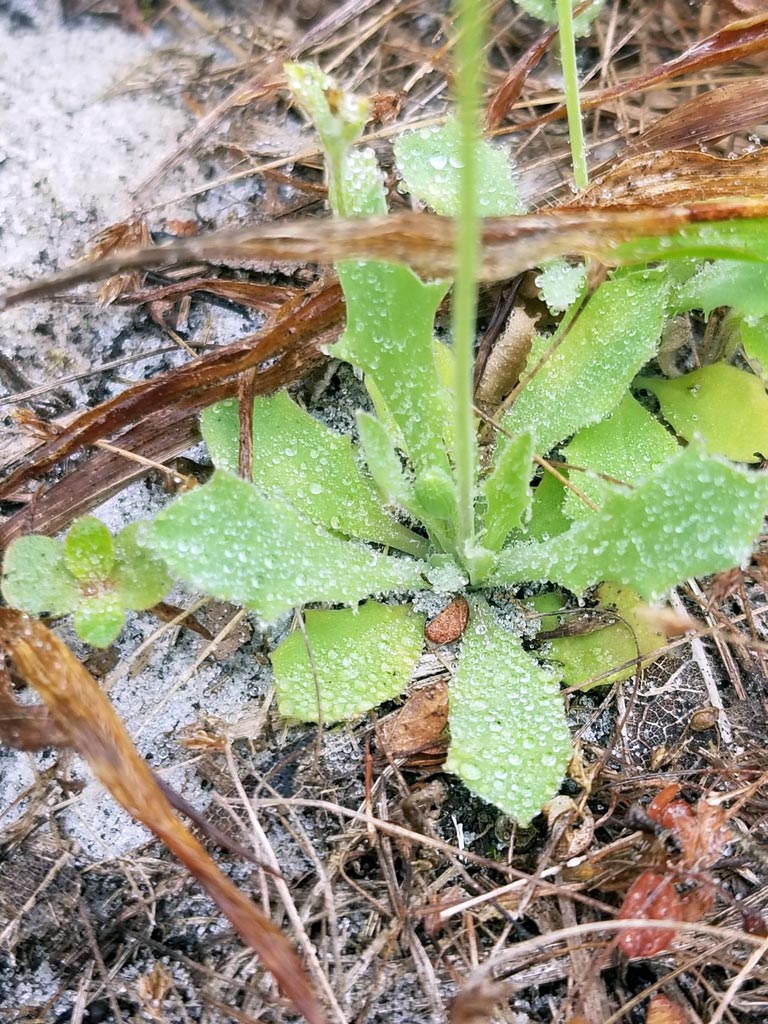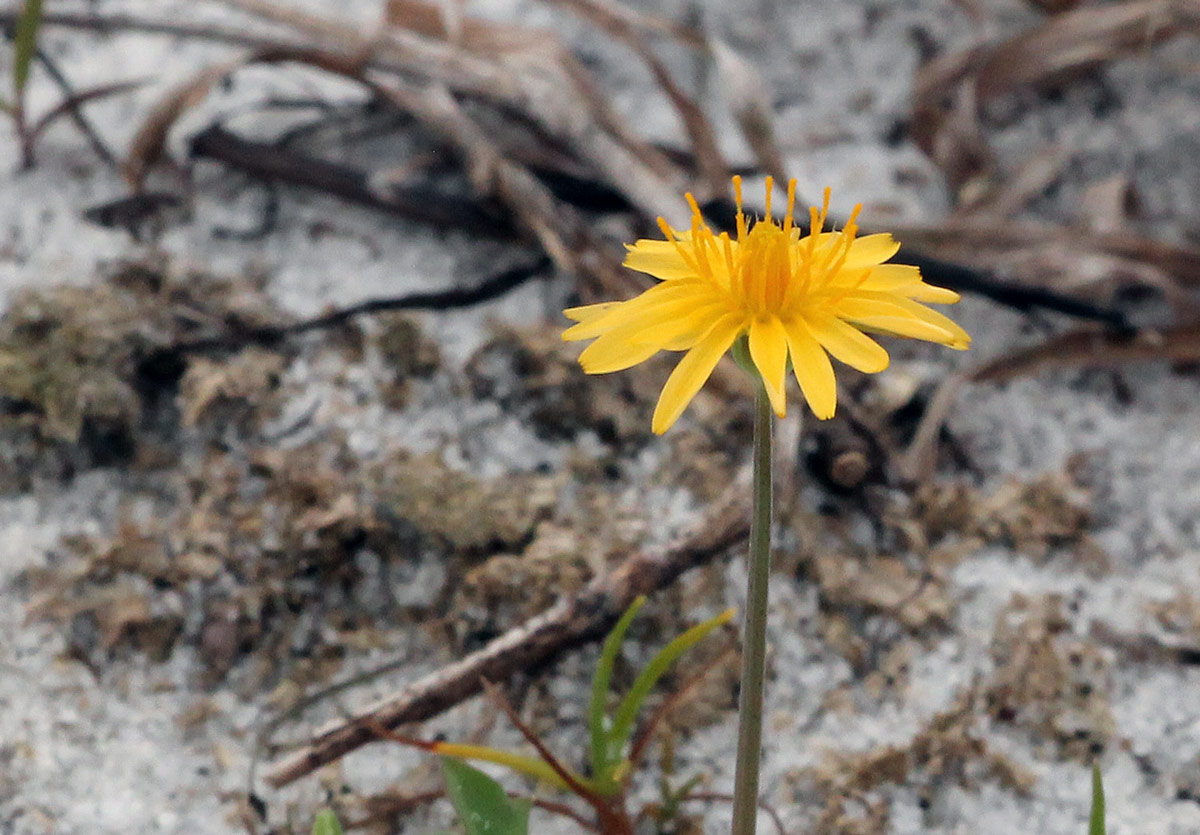Virginia dwarfdandelion
Pictured above: Virginia dwarfdandelion (Krigia virginica) by Mary Keim. Click on terms for botanical definitions. View post as a PDF.
Virginia dwarfdandelion is a modest little wildflower found in pine flatwoods, scrub and disturbed sites throughout Central and North Florida. It blooms in later winter through spring and attracts bees, butterflies and other small pollinators. The plant looks like a miniature version of the non-native Common dandelion (Taraxacum officinale).



Flowerheads are small (up to ½” across), solitary and made up of many yellow ray florets. Disc florets are absent. Flowers are solitary and held together at their base by 9–18 small, erect bracts that become reflexed as the flowerhead matures into seed. Basal leaves are light green, up to 3” long and oblanceolate to spatulate, often with irregular shallow lobes that have pointed tips. Leaf margins may be slightly hairy and undulate. Stem leaves are largely absent, or reduced when present. The leaves and stems contain a white latex. Fruits are small achenes, each with 5 scales and 5 hairs that catch the wind and aid in dispersal.
The genus Krigia is named for David Krieg, a 17th century colonial botanist.
Family: Asteraceae (Aster, composite or daisy family)
Native range: North and Central Florida
To see where natural populations of Virginia dwarfdandelion have been vouchered, visit www.florida.plantatlas.usf.edu/.
Lifespan: Annual
Soil: Dry, well-drained sandy soils
Exposure: Full sun to minimal shade
Growth habit: 6–12” tall
Propagation: Seeds
Virginia dwarfdandelion is not commercially available. Visit a natural area to see them.

